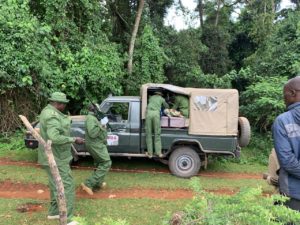 Mara Elephant Project started the third quarter with a focus on elephant collaring operations. The “Mara Team” as Kenya Wildlife Service (KWS) has come to refer to us was very busy (pictured left: the “team” assembled in the Mau). This team was made up of some key members from KWS, Sheldrick Wildlife Trust (SWT) and Mara Elephant Project and the glue for the team was the Karen Blixen Camp Trust (KBCT) helicopter. We collared a total of five elephants in July, four of which were in very difficult conditions. Elephants have been going into places where they have not visited for many years and “The Team” reacted to these incidents rapidly and effectively as would be expected with its combined experience. Not only were the airborne mobile team members critical to getting to these extraordinary sites across Kenya, but the ground teams and technical support staff, made each operation a success. The collars deployed in July give us unique insight on elephant movements over a very large area from Southern Baringo, Mau, Nairobi, Mosiro and Loita. For more on this, read the Q3 Research & Tracking Report.
Mara Elephant Project started the third quarter with a focus on elephant collaring operations. The “Mara Team” as Kenya Wildlife Service (KWS) has come to refer to us was very busy (pictured left: the “team” assembled in the Mau). This team was made up of some key members from KWS, Sheldrick Wildlife Trust (SWT) and Mara Elephant Project and the glue for the team was the Karen Blixen Camp Trust (KBCT) helicopter. We collared a total of five elephants in July, four of which were in very difficult conditions. Elephants have been going into places where they have not visited for many years and “The Team” reacted to these incidents rapidly and effectively as would be expected with its combined experience. Not only were the airborne mobile team members critical to getting to these extraordinary sites across Kenya, but the ground teams and technical support staff, made each operation a success. The collars deployed in July give us unique insight on elephant movements over a very large area from Southern Baringo, Mau, Nairobi, Mosiro and Loita. For more on this, read the Q3 Research & Tracking Report.
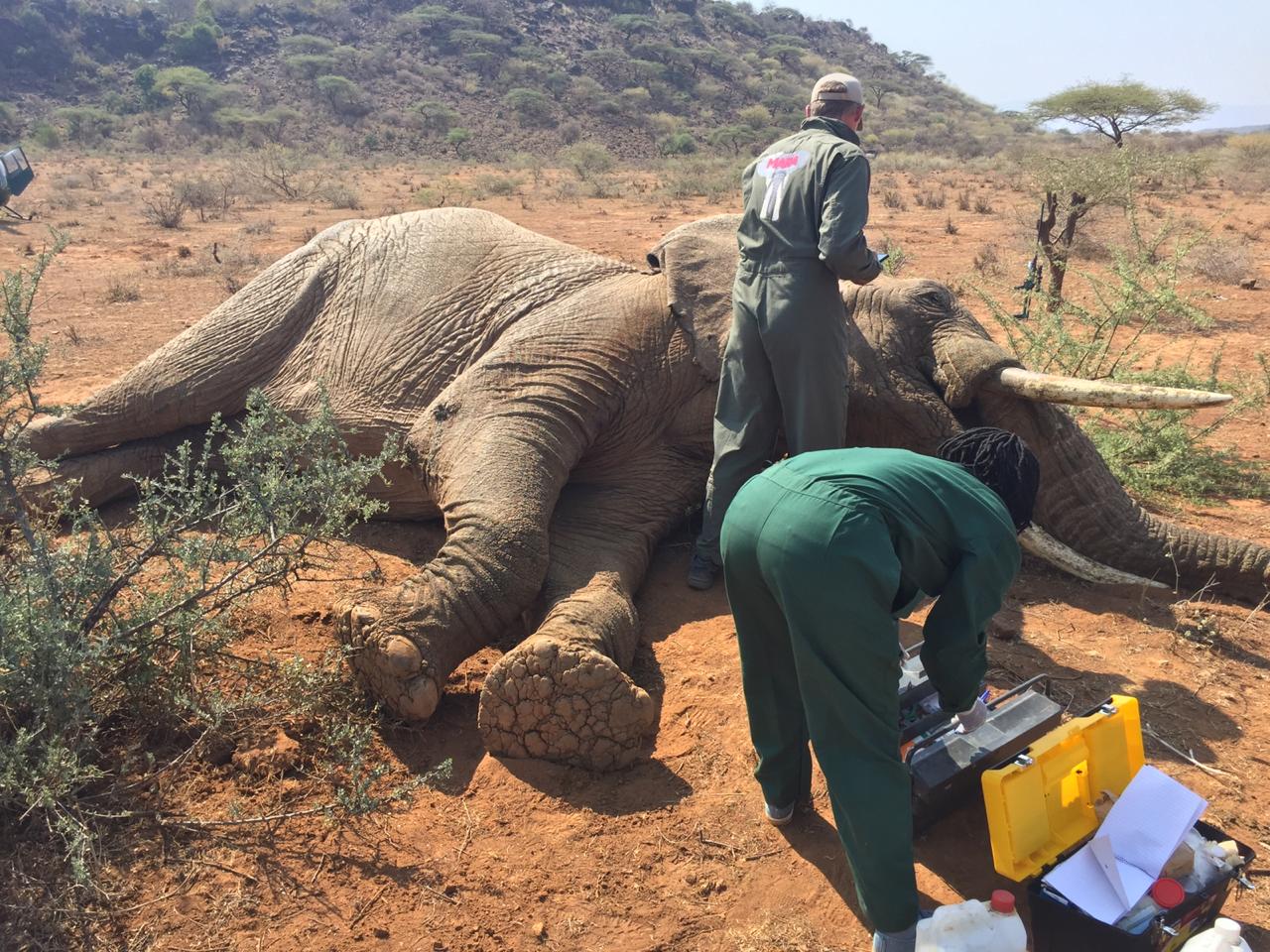 The collaring operation in Suswa.
The collaring operation in Suswa.
The MEP intelligence team continues to have success with arrests of suspects and ivory recovered. During the third quarter, the MEP intelligence unit along with KWS arrested two suspects in possession of 17 kg of ivory. MEP intelligence was also involved in the arrest of one well-known individual in possession of eight rounds of ammunition, one AK47, three lion claws, lion canines and an elephant skin. MEP rangers also successfully confiscated 12 kg of bushmeat and arrested one suspect for bushmeat poaching.
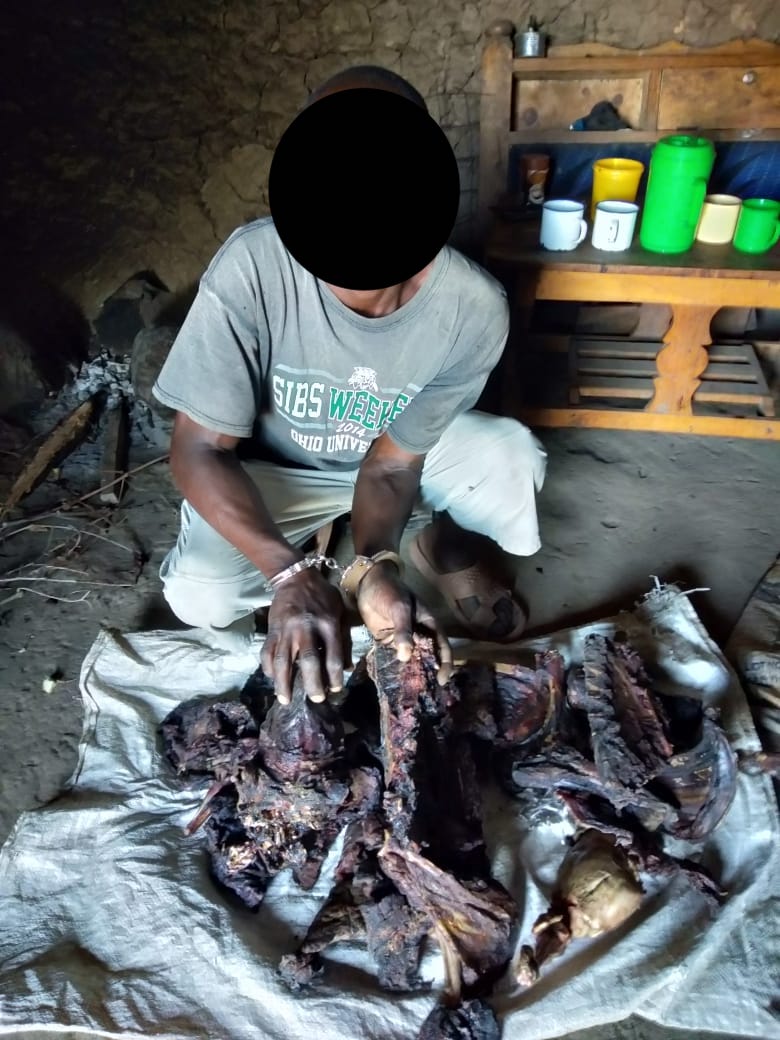
One suspect arrested in July with 12 kg of bushmeat.
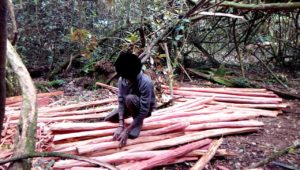 In the Mau Forest, the Sheldrick Wildlife Trust Mau De-Snaring Unit improved forest security in the third quarter by taking government officials in July to the areas where logging, farming and charcoal production continue in the forest. This spurred a larger operation to evict these illegal users/exploiters from the forest. In the third quarter, the SWT Mau De-Snaring Unit recovered a total of 720 pieces of cedar (pictured left: one arrest in July with cedar), 11 sacks of charcoal, 11 poison arrows and one pit saw. They also arrested a total of nine suspects for illegal logging, charcoal production, possession of poison arrows and a pit saw. Finally, they removed 63 snares and destroyed nine kilns. The impact of this team is significant in this critical area of the Mara ecosystem and that is why we are happy to announce that in August the Sheldrick Wildlife Trust agreed to fund a second team in the Mau Forest to conduct anti-poaching patrols! This will increase our area of coverage in the Mau, which is in need of more protection. We expect to operationalize this team before the end of this year.
In the Mau Forest, the Sheldrick Wildlife Trust Mau De-Snaring Unit improved forest security in the third quarter by taking government officials in July to the areas where logging, farming and charcoal production continue in the forest. This spurred a larger operation to evict these illegal users/exploiters from the forest. In the third quarter, the SWT Mau De-Snaring Unit recovered a total of 720 pieces of cedar (pictured left: one arrest in July with cedar), 11 sacks of charcoal, 11 poison arrows and one pit saw. They also arrested a total of nine suspects for illegal logging, charcoal production, possession of poison arrows and a pit saw. Finally, they removed 63 snares and destroyed nine kilns. The impact of this team is significant in this critical area of the Mara ecosystem and that is why we are happy to announce that in August the Sheldrick Wildlife Trust agreed to fund a second team in the Mau Forest to conduct anti-poaching patrols! This will increase our area of coverage in the Mau, which is in need of more protection. We expect to operationalize this team before the end of this year.
Illegal logging in key areas of the Mara ecosystem is rampant and in the third quarter MEP rangers focused on Loita and Transmara. In Loita, the MEP ranger unit recovered a total of 12,610 cedar posts, 10 podo posts and arrested one suspect in the third quarter. In the Transmara, our rangers destroyed 51 kilns and confiscated five sacks of charcoal. Rangers continue to be vigilant in their efforts to protect the Mara’s habitat.
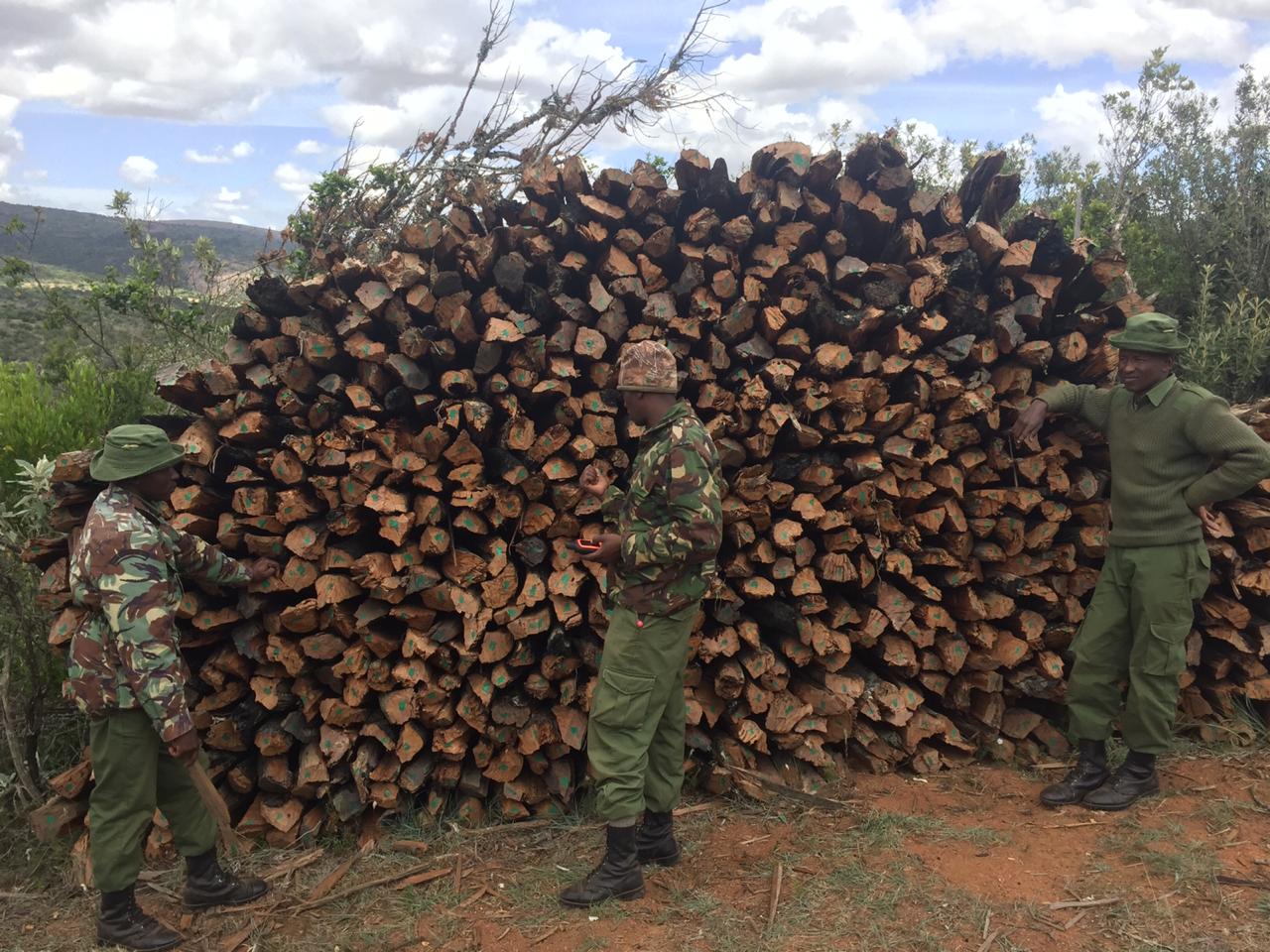
The Loita team recovered 1,000 pieces of cedar posts in Naroosura Olokeri area. Waiting to be transported to KWS HQ.

After taking delivery of the Karen Blixen Camp Trust helicopter on the 24th of June, we flew more operations than MEP has flown since inception in the third quarter. To say we are relieved to have this vital asset back and operating in the Mara would be an understatement. The huge amount of flying time is reflected by the opportunities for collaring operations, elephant treatments and human-elephant conflict mitigation we were able to do in the third quarter. The new helicopter is owned by the Karen Blixen Camp Trust who believe in the work the helicopter can do for wildlife conservation. The registration of the helicopter is 5Y-MEP and it is painted British Racing Green which was the 2017 Robinson Helicopter Company color of that year. 5Y-MEP is running beautifully and seems to have a lot of power. Pictured left: An amazing shot by Adam Bannister from Angama Foundation.

The MEP helicopter in the Mau Forest.
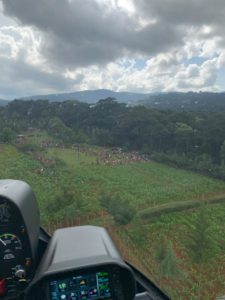
In July, on one occasion during the collaring in the Mau Forest there was really nowhere to land once the elephant fell asleep which meant that we “landed the tail” meaning that there was only space to land the tail rotor. The high altitude, hot and heavy conditions made for an interesting operation, but all went off without incident. During the Chemesusu collaring we actually used the helicopter to keep the crowd busy and away from the elephants. Although there were several hundred people around the helicopter during this operation, they were very excited and not hostile to the elephants. The community members were very polite, and we took a number of selfies and group photos with the helicopter. Pictured right: the community gathered near the helicopter landing site.
MEP also assisted the Sheldrick Wildlife Trust Mobile Vet Unit in two elephant treatments in September. The first was a treatment of a young calf and the second was a large bull treated in Mosiro with various arrow injuries. He was sighted by MEP during a routine aerial patrol of our collared elephant Napoleon. In September, we resumed these aerial monitoring flights of our collared elephants and it was during one that we identified an injured elephant in Napolean’s herd. We were then able to deploy the KWS vet Dr. Limo to Mosiro with the helicopter to treat this injured elephant. We pulled an arrow out of him and expect a full recovery.
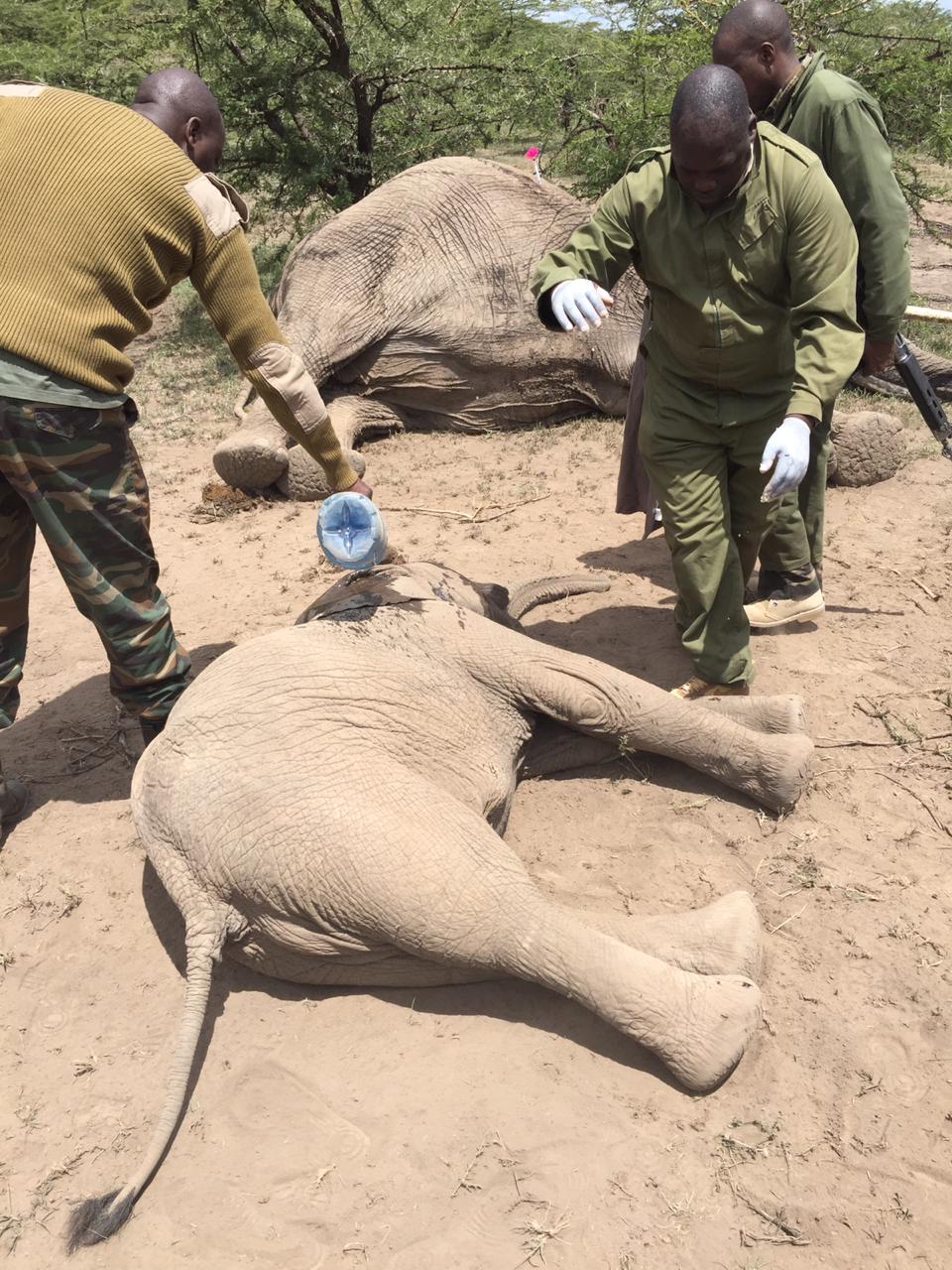
KWS Vet Dr. Limo working on the young calf in September.
Teddy Kinyanjui, owner of Seedballs Kenya and the inventor of seed balls has teamed up with PhD researcher Nathan Hahn to invent a new farm based HEC deterrent. Nathan will be categorizing the effect of our HEC tool kit and Teddy and Nathan have been working together since 2014. This time they are looking at developing a low cost and easy to replicate conflict prevention and resolution tool that are necessary to build up the tolerance of local farmers who live near elephants. This will reduce mortality and treatment costs of elephants hit with spears and arrows as well as economic loss experienced by farmers. Teddy and Nathan have re-purposed the seed balls technology to make a larger pepper and charcoal dust ball that disintegrates in a cloud of dust. The delivery tool is a modernized roman infantry staff sling. They have already recorded throwing the pepper balls over 100 meters. This new technology is important to trial while developing our best practices for the HEC toolkit.
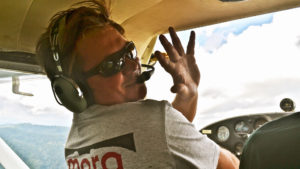
Finally, in August, we lost Richard Roberts to brain cancer. Richard fought this terrible disease for the last two years. He was so strong and positive it is still hard to believe that he is gone. Everyone at the MEP family will miss him so much. Please read the following statement from Mara Elephant Project Board of Trustees Chairman Colin Church.
“The Mara Elephant Project suffered a great loss on August 18 with the death of our co-founder and trustee Richard Roberts. Richard was a conservation giant of his generation. He was a true son of the greater Mara region where he spent his earliest life and fought for its best future all his life – sadly snatched too early from us all. He believed with utmost passion and total focus that in the Mara all of its wide community should benefit from its unique environment. He believed that the people of the Mara were the guardians of one of the greatest wildlife spectacles on Earth. The MEP Board of Trustees conveys our deepest sympathy to Liz, Willoughby, Ivy and the wider Roberts family at this time of great bereavement and sadness. A visionary son of Africa has been taken from us all too soon.”


